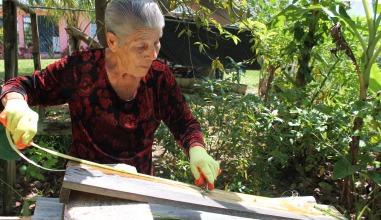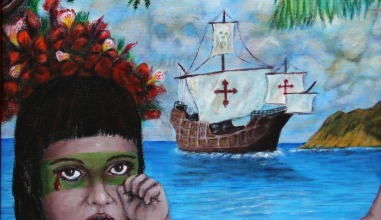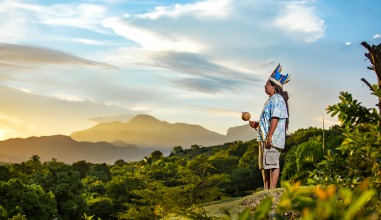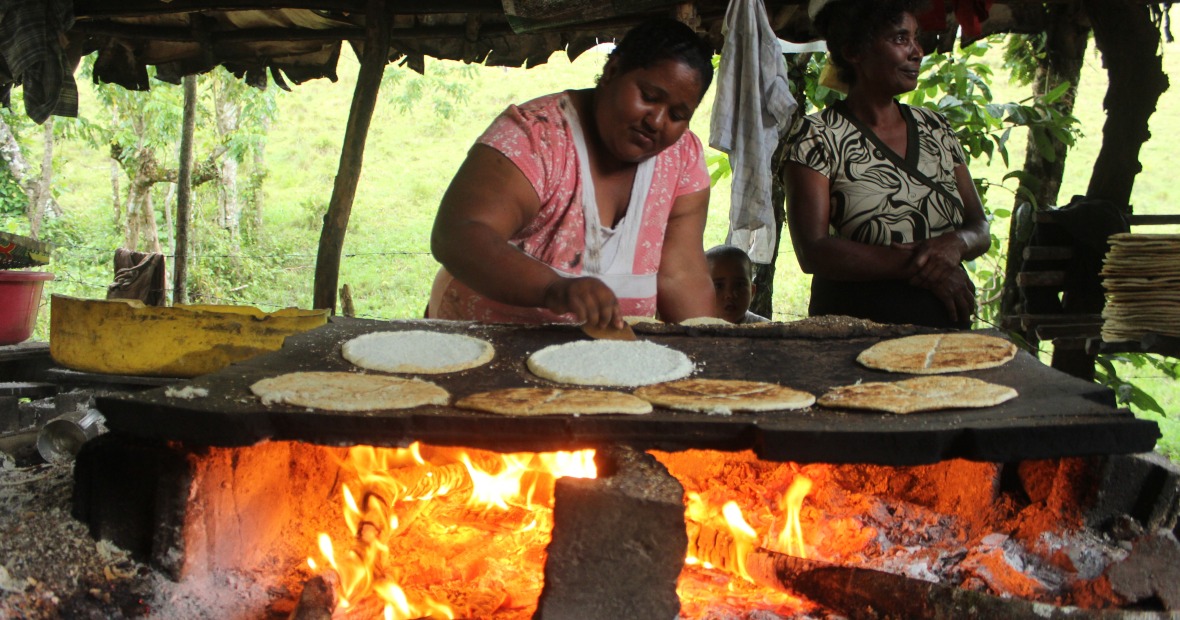Smithsonian Traveling Exhibition Explores Indigenous Legacy of the Caribbean at Drake Community Library
Experience the captivating journey of Caribbean Indigenous resilience through the bilingual (Spanish/English) traveling Smithsonian exhibition, “Caribbean Indigenous Resistance / Resistencia indígena del Caribe ¡Taíno Vive!” available to the public at the Drake Community Library.

On view through November 19, the exhibition highlights the endurance and bravery of the Indigenous peoples of the northern Caribbean islands, known as the Taíno. Explore contemporary crafts, connect with musical instruments, and examine utilitarian artifacts that provide a glimpse into Taíno daily life.
“We are excited to work with our partners at the Smithsonian and at Drake Community Library to share this Taíno exhibition,” says Sarah Smith, director of outreach programming and events in the Office of Community Partnerships, Planning and Research at Grinnell College. “With the support of Drake Community Library, people in the area now have access to this extraordinary Smithsonian resource right here at home.”
Among the exhibition’s notable highlights are exceptional Indigenous musical instruments, including maracas and güiros, meticulously crafted from the dritas fruit of the Higuera tree, native to Central America and Puerto Rico. Discover the artistry of contemporary objects such as jícara bowls, skillfully fashioned from the gourd tree’s fruit, offering a window into the traditional eating, and drinking practices of the Taíno.
This exhibition narrates the incredible survival journey of the Taíno people, illustrating the far-reaching impact and enduring legacy of Caribbean Indigenous culture across the globe. Uncover the profound historical tapestry and enduring cultural heritage of the region while pondering intricate questions about heritage, ancestry, and race that resonate in the context of modern Taíno identities.

Background on the ¡Taíno Vive! Exhibition
The term Taíno refers to the diverse Arawak-speaking peoples of the Greater Antilles and their descendants in the Caribbean and beyond. In 1492, the Indigenous Taíno peoples encountered Christopher Columbus, launching an invasion by Spanish soldiers, priests, and colonists. The attack devastated Taíno civilization and decimated the population. Colonial officials assumed their extinction by the 1550s, but in fact, the Taíno indigenous populations and their culture resisted and survived.
Through historical records and regional traditions, the exhibition affirms that the Taíno Indigenous peoples left rich cultural legacies within the Caribbean, in places such as in Cuba, Jamaica, Haiti, the Dominican Republic, and Puerto Rico. Taíno descendants are currently a part of a growing movement dedicated to reaffirming their Caribbean Indigenous identity and culture.

About the ¡Taíno Vive! Exhibition
“Caribbean Indigenous Resistance / Resistencia indígena del Caribe ¡Taíno Vive!” is organized by the Smithsonian Institution Traveling Exhibition Service (SITES) in collaboration with the National Museum of the American Indian and the National Museum of the American Latino.
This exhibition received federal support from the Latino Initiatives Pool, administered by the National Museum of the American Latino. For more information on the exhibit, visit the Smithsonian website, Caribbean Indigenous Resistance / Resistencia indígena del Caribe ¡Taíno Vive!
About the Smithsonian Institution Traveling Exhibition Service
The Smithsonian Institution Traveling Exhibition Service (SITES) and Smithsonian Affiliations are critical national outreach units at the Smithsonian Institution. For more than 70 years, SITES has been connecting Americans to their shared cultural heritage through a wide range of art, science, and history exhibitions. Smithsonian Affiliations, such as the partnership with Grinnell College, establish and maintain the Smithsonian’s long-term partnerships with museums, educational organizations and cultural institutions in the U.S., Puerto Rico, and Panama. Together, SITES and Affiliations share the Smithsonian’s vast resources with millions of people outside Washington, D.C. Visit sites.si.edu and affiliations.si.edu for more information.


